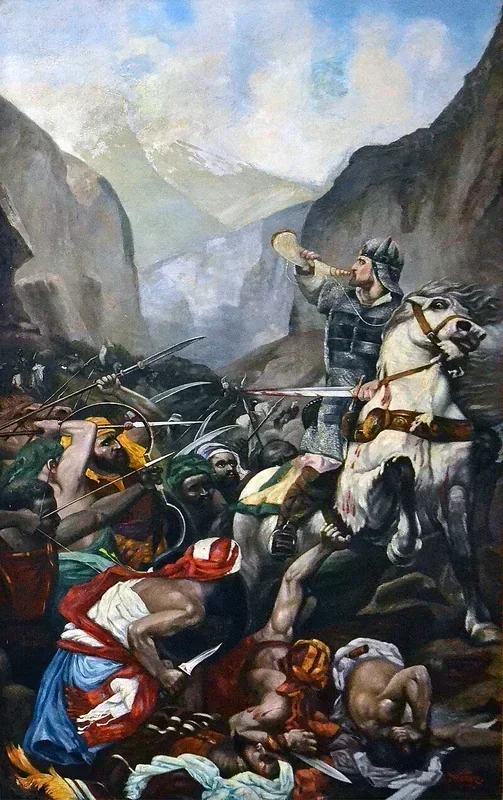Durendal

Durendal, also spelled Durandal, is the legendary sword of Roland, a heroic paladin and partly historical officer under Charlemagne in French epic literature. Renowned for its extraordinary hardness and sharpness, Durendal is said in several sources—including La Chanson de Roland (The Song of Roland)—to have originally belonged to Charlemagne himself when he was young.
According to legend, during the Battle of Roncevaux Pass, Roland, determined to keep the sword from falling into Saracen hands, hurled it far from him. It is said to have landed in Rocamadour, where local tradition holds that it remained embedded in a rock face. A sword matching this description, displayed in Rocamadour for centuries as a symbolic relic, was reported stolen in June 2024.
Durendal was believed to be indestructible and capable of slicing through massive boulders in a single strike. Its origins vary across medieval texts. Several sources from the Matter of France assert that it was forged by Wayland the Smith, a legendary blacksmith frequently credited with crafting powerful weapons in medieval romances.
In La Chanson de Roland, an angel delivers Durendal to Charlemagne in the vale of Moriane, and Charlemagne later bestows it upon Roland. A different version found in the 12th-century chanson de geste Mainet (which refers to the youthful Charlemagne by the alias Mainés) tells of young Charlemagne obtaining the sword after slaying the Saracen Braimant during his exile in Spain. In this version, Charlemagne briefly possesses the sword but does not keep it. The story is better preserved in certain non-epic texts and in the Franco-Italian adaptation Karleto. In the Low German version Karl Mainet, the encounter occurs near the vale of Moriane, close to Toledo.
Another 12th-century chanson de geste, The Song of Aspremont, presents a different origin. In this tale, Durendal is initially owned by a Saracen warrior named Aumon, son of King Agolant. A young and unarmed Roland, borrowing Naimes’s horse Morel, defeats Aumon using only a rod, and claims both the magical sword and the warhorse Veillantif as his reward.
According to tradition, Roland’s attempt to destroy Durendal led to the creation of a dramatic gap in the Pyrenees, known as Roland’s Breach. The sword proved so strong that rather than shattering, it cleaved a deep gash into the mountainside with a single blow. A similar legend attributes the notch in the Spanish peak Puig Campana to this same act.
One version of the Rocamadour legend claims that instead of dying with Durendal hidden beneath his body, Roland prayed to the Archangel Michael, who gave him the strength to throw the sword across the mountains into France. The sword supposedly landed in Rocamadour and was placed in the Chapel of Mary. According to some accounts, it was stolen by Henry the Young King in 1183. Over the centuries, various replicas were created to replace the original. The most recent was a sheet-metal sword secured in a cliff wall with a chain, which was also reported stolen in June 2024.


